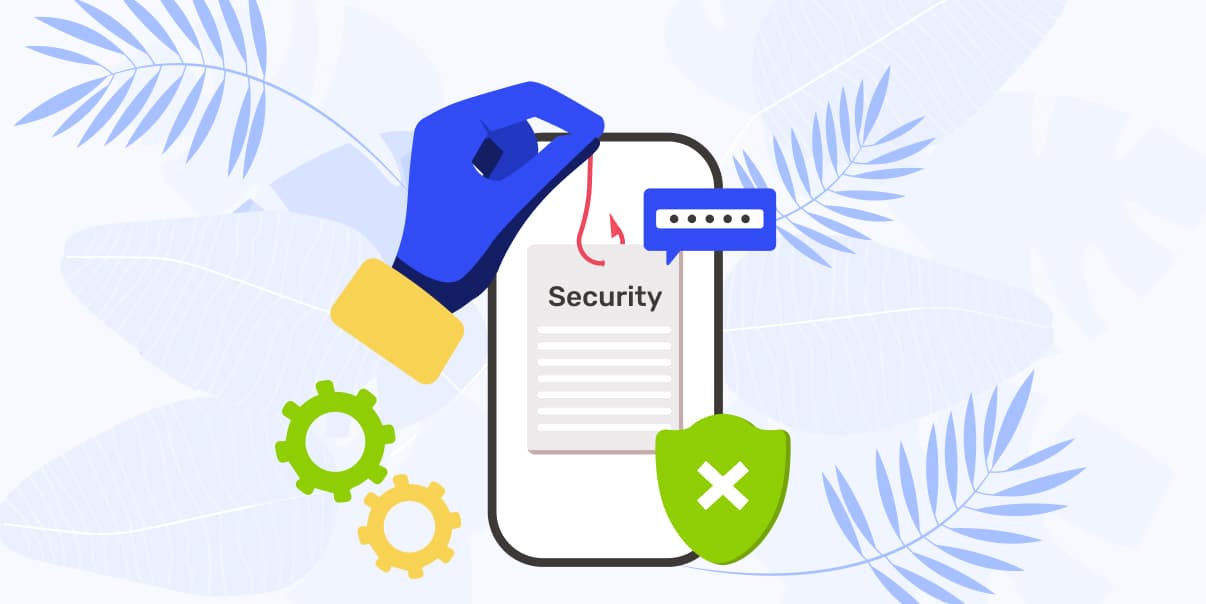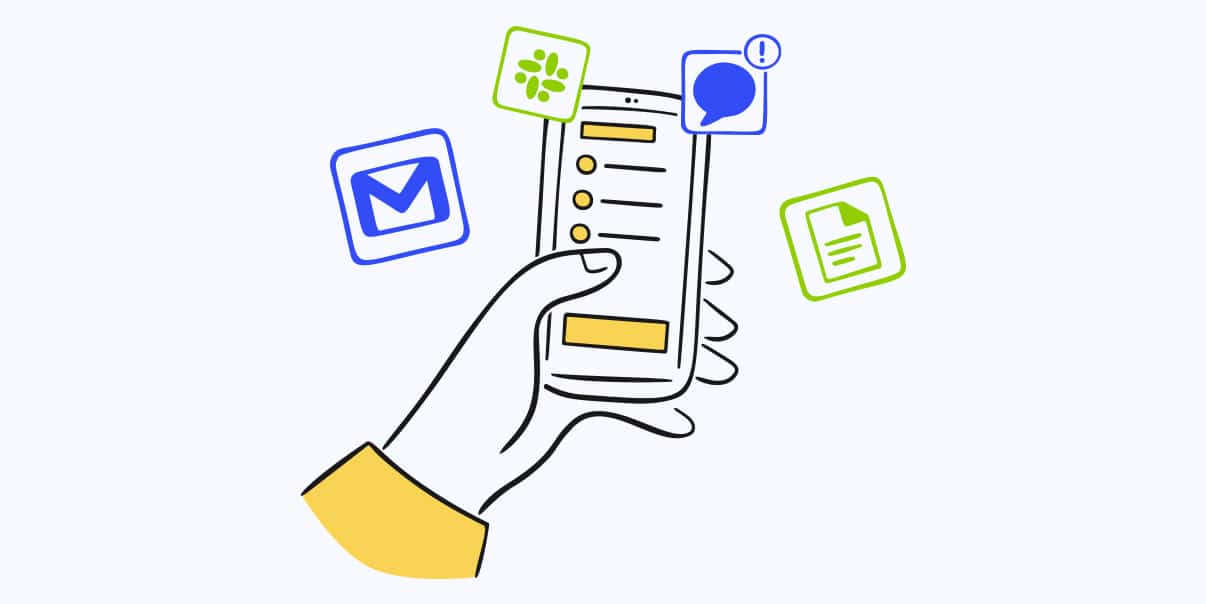Secure Mobile App Development: Encryption and Decryption Methods

Security is an integral part of mobile app development. Encryption and decryption ensure that our data stays safe. Encryption takes plain text and turns it into complex code. Decryption is the opposite – it turns the code back into plain text. This article will explore why app security is essential and look at today’s most common encryption and decryption methods.
The Role of Encryption and Decryption in Mobile App Development
Security app developers use encryption and decryption to protect user data. These techniques ensure that the data transmitted remains private and secure.
What Is Encryption?
Encryption helps keep our data private. It uses a unique code to turn readable information into something unrecognizable. It ensures that only authorized people can see or use it. This process uses a special “key” called an algorithm. This mathematical formula helps security software decode the encrypted data.
What Is Decryption?
Decryption is a process where we use the same algorithm to reverse the encryption and turn the code back into readable information.
Importance of Mobile App Security in Development
Mobile apps make our lives so much easier, from shopping and banking to communication. But they must be secure, so cyber attackers can’t gain access to our data. It is why mobile security is integral to app development. We use unique methods like encryption and authentication to help protect user information. Developers must also know the latest mobile app security issues to create secure apps.
Here are some reasons why mobile application security is crucial:
- It protects our personal information. This data includes our name, address, phone number, credit card details, and passwords. It ensures that data is safe, even on lost and stolen devices.
- It prevents malware attacks. Mobile apps can be a breeding ground for malware, making them vulnerable to attacks. Malware can inject malicious code into your device. Security measures protect your data against these kinds of attacks.
- It ensures business continuity. A data leak in a mobile app can lead to downtime and loss of revenue. Secure app development prevents this and helps maintain a company’s reputation.
- It ensures compliance. It means complying with guidelines set by regulatory bodies such as GDPR and HIPAA.
- It increases user confidence. Mobile users are likelier to use secure mobile apps with a good reputation.
Types of Encryption and Decryption Methods
There are different encryption and decryption methods used in mobile app development. Here are some of today’s widely-used encryption and decryption methods:
Symmetric Encryption
This encryption uses a single key to encrypt and decrypt data. This single key is shared among authorized parties, making it easy for them to access the encrypted data. It is considered an efficient and secure encryption for large amounts of data. This type of encryption is beneficial when transferring large amounts of data securely. Examples of symmetric encryption include:
1. Advanced Encryption Standard
AES is a symmetric key encryption used to encrypt and decrypt data. It uses a unique password-based system to turn plain text into an unreadable ciphertext form. AES prevents unauthorized parties from accessing the data.
2. Data Encryption Standard
DES is a symmetric key encryption created by the National Security Agency. It uses a 56-bit encryption algorithm to change plain text into ciphertext.
3. Blowfish
This symmetric key encryption uses a variable key-length cipher. The key sizes range from 32 bits to 448 bits, making it suitable for encrypting data. It is helpful in online banking and e-commerce transactions.
Asymmetric Encryption
Asymmetric encryption uses two keys. One is for encryption, and the other is for decryption. Only the sender and receiver with these keys can access the encrypted data. Asymmetric key encryption is necessary for secure communication between two parties. It’s also an ideal solution for encrypting small amounts of data. Examples of asymmetric encryption are:
1. RSA Algorithm
RSA stands for Rivest-Shamir-Adleman. It uses both a public and private key to encrypt and decrypt data. This asymmetric key encryption can secure online data exchanges. The public key is available to everyone, while the user only knows the private key.
2. Elliptic Curve Cryptography
ECC uses elliptic curves to generate keys. It encrypts data using a combination of public and private keys, making it difficult for unauthorized parties to access the data.
Hybrid Encryption
Hybrid encryption combines the benefits of both symmetric and asymmetric encryption. It uses symmetric encryption for data and asymmetric encryption for exchanging the symmetric key. It’s one of the most secure methods available today.
Common uses for hybrid encryption include email and instant messaging applications. Examples of hybrid encryption include:
1. TLS Protocol
TLS is a necessary protocol that helps keep our data safe when transferred over networks like the internet. It uses symmetric and asymmetric key encryption to secure data exchange.
2. PGP Encryption
Pretty Good Privacy is a secure way to send and receive emails and digital documents. It works by using two different types of public and private keys. These keys work together to create an encrypted layer of protection. PGP is open-source and widely used, ensuring data remains secure during storage, transmission, or receipt.
How Encryption and Decryption Work in Mobile App Development
Encryption and decryption methods play an essential role in mobile app development. We’ll explore why these processes are necessary and how they work in mobile app development.
Overview of the Encryption and Decryption Process
Encryption and decryption are cryptography components, securing communication through codes and ciphers. Encryption converts the original data or messages into a secret code. For symmetric encryption, only the one who has the key can understand it. In the case of asymmetric encryption, the public key is used for encryption, and the private key for decryption. It ensures that only the intended recipient can access the data.
Key Generation and Management
Key generation and management are essential to the encryption and decryption process. Generating a key is the first step in secure app development. It will encrypt data so only those with the password can access the ciphertext. Keep the key safe, as it is critical in decrypting data once encrypted. Therefore, you must ensure proper key management during secure app development.
Data Encryption and Decryption Process
Encryption and decryption protect data confidentiality, integrity, and authenticity. These processes are essential tools for securing communication and data protection. Apps like online banking, e-commerce, messaging, and file sharing use these security measures.
Here’s an overview of these processes:
Encryption:
- The encryption process starts with plaintext, which can be any data, such as a message, a file, or a password.
- The plaintext is then transformed into ciphertext using an encryption algorithm. It is a set of mathematical operations and rules that scramble the plaintext according to a specific key.
- The key is a sequence of bits or characters that defines the rules for encryption and determines the resulting ciphertext.
- There are different types of encryption with varying levels of security. You need to choose carefully what kind of encryption your app needs.
Decryption:
- Decryption is the reverse process of encryption.
- It starts with ciphertext, which is the encrypted message.
- The ciphertext is transformed into plaintext using a decryption algorithm. It is designed to reverse the encryption process.
- The algorithm needs the correct key to decrypt the ciphertext and recover the original plaintext.
- The decryption algorithm will give an incorrect result if you use the wrong key. The decoded text will be meaningless or unreadable.
Best Practices for Mobile App Security
As more users rely on their phones for day-to-day activities, you must ensure your apps’ safety and security. Implementing mobile app security best practices is essential when developing a new app. Here are some key tips to keep in mind when designing secure mobile apps.
Strong Encryption Algorithm
Choose a robust encryption algorithm, such as AES or RSA. It will help protect your data from malicious attackers. A powerful encryption algorithm provides strong security and resistance to various attacks. The best type of encryption is the one that requires a combination of both symmetric and asymmetric algorithms.
User Authentication and Authorization
User authentication and authorization are necessary for mobile app development. It helps authenticate app users and grants them access to specific data or functions.
You can use different user authentication and authorization methods, such as:
- User ID and Password. It is the most basic form of authentication. It asks users to enter a username and password to sign in.
- Multi-Factor Authentication. MFA combines two or more factors to verify the user before giving authorization. Initially, email and SMS were acceptable methods for MFA, but they have been deemed insecure options. Instead, you can use a mix of passwords, biometrics, or one-time codes sent through secure channels, like authenticator apps.
- Single Sign-On. SSO allows users to log into multiple apps with just one credential. You will need a single login instead of entering different usernames and passwords each time you access the app.
- Token-Based Authentication. This method involves sending a token or code instead of actual login details. The code verifies a user’s identity over the web or mobile app interface.
- Location-Based Authorization. This type of authorization limits access to specific data depending on where the request originated. This technique uses geolocation services like GPS and IP address tracking technologies.
You can protect your users from threats using proper authentication and authorization methods. Following these mobile app security best practices will keep your user data safe.
Secure Key Storage
Secure key storage is an essential part of mobile app development. It involves keeping the encryption and decryption keys safe from malicious actors. To do this, developers must use specific methods to store the unique keys used during encryption and decryption. Use platform-specific secure storage solutions, like Android’s Keystore or iOS’s Keychain. Others use trusted execution environments (TEE) for storing keys securely.
Regular Software Updates
Keeping your software up-to-date is crucial in protecting your app data. Mobile app security threats are growing, so update your app regularly. Install the updates once they become available. It also ensures you can access the latest features available in the app. Staying up-to-date also helps ensure that your info remains safe overall.
Challenges in Mobile App Security in Development
Mobile app development has revolutionized the way we access information and interact with each other. But, like all technology, they come with security challenges. Developers must know these threats as users exchange sensitive data via apps. In this section, we’ll look at some common challenges developers face when protecting users’ data and privacy.
The Complexity of Encryption Algorithms
There are several different types of encryption and decryption methods available. Choosing the best that meets your app’s security needs is essential. Look at all your options and make sure that you select a method that offers maximum protection.
When developing secure applications, you need developers who understand complex encryption algorithms. If you need access to experienced developers for your mobile app development, BIT Studios can help. We have a massive pool of developers skilled in various app development technologies. Contact us to learn how we can help with your app development.
Lack of Security Knowledge
Mobile app development involves complex coding. Some developers find it difficult to keep up with the latest security challenges. It is why you must update your knowledge regularly on security threats in mobile app development. Keeping up-to-date with the latest trends will ensure data privacy for users.
Compatibility with Multiple Platforms
App developers must remember the various platforms they need to support. It is especially true in terms of encryption and decryption methods. Ensure that your encryption libraries and secure storage implementations work with multiple devices. It helps protect your app users regardless of your user’s device.
Cost and Time of Implementation
Developing secure mobile applications can be a costly and time-consuming process. It takes extensive research, coding, and testing to ensure the app is as safe as possible for users. Consider the following expenses:
Research Costs
Developing a secure mobile app requires research into current threats and security guidelines. You also need to know the latest encryption algorithms available.
Coding Costs
Creating an app with robust security features takes time and money to code correctly. You must test it against known security vulnerabilities and update it as necessary.
Testing Costs
Once an app’s initial version is developed, it undergoes mobile application security testing. This step identifies any potential flaws or weaknesses in its security protocols before it goes live. Make sure to tick off all items in your mobile app security checklist.
Hosting Costs
After creating the app, you must submit it to official and third-party app stores. You can choose either Google Play Store or the App Store to launch the app.
Maintenance Costs
Even after the initial deployment of a secure mobile application, developers must stay aware of new threats that may come up over time. You need to continually maintain the app by updating them in response to identified risks or changes in industry standards.
Conclusion
Secure mobile apps require extensive research, coding, penetration testing, and maintenance. This process can be costly in terms of time and money, but protecting users from potential threats is essential. These steps will help ensure your app is safe on mobile devices.
Future Trends in Encryption and Decryption in Mobile App Development
As technology advances, so do the security needs of mobile applications. Awareness of some encryption and decryption trends emerging in mobile app development is crucial.
- Stronger Encryption Algorithms. As computing power increases, the need for stronger encryption algorithms grows. To maintain security against attackers who can also leverage more powerful hardware.
- Advanced Key Management Systems. Companies now use advanced key management systems to store encryption keys safely. It prevents the key from being stolen or leaked by hackers.
- Better User Authentication Methods. Mobile app developers also focus on improving user authentication methods. It includes two-factor authentication, biometric authentication, and password policies.
These trends are helping mobile app developers keep up with advancing technology and create secure apps for users. By staying current with these security trends, mobile app developers can ensure their apps remain safe and secure.
We’re BIT Studios!
At BIT Studios we specialize in designing, building, shipping, and scaling beautiful, usable products with blazing-fast efficiency



